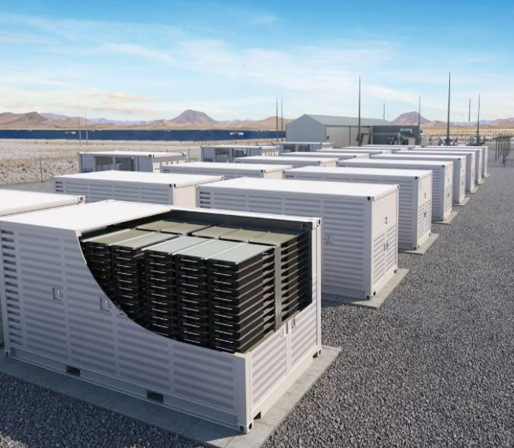Battery Energy Storage in Remote Areas: Solving Power Access Challenges
From isolated mountain villages to off-grid island communities, remote areas across the U.S. and the world often face a common and pressing issue—reliable access to electricity. Traditional power grids don’t reach these locations easily due to high costs, challenging terrain, and low population density. Diesel generators are commonly used but come with their own set of problems: high fuel costs, emissions, noise, and maintenance issues.
That’s where battery energy storage systems (BESS) step in. These systems are transforming how energy is generated, stored, and used in remote areas. They make renewable energy sources like solar and wind viable around the clock, reduce reliance on fossil fuels, and provide a reliable, cleaner, and often cheaper source of electricity.
In this blog, we’ll explore how battery energy storage is solving power access challenges in remote regions and why companies like Chronicle Electric are at the forefront of making these technologies accessible and dependable.
What Is a Battery Energy Storage System (BESS)?
Before diving into its role in remote areas, let’s quickly review what a BESS is.
A Battery Energy Storage System is a setup that stores electricity in rechargeable batteries for later use. It usually works in tandem with renewable energy sources like solar panels or wind turbines. The batteries store excess energy generated during peak production hours (e.g., sunny afternoons) and release it when production drops or demand increases (e.g., at night or on cloudy days).
BESS units come in many shapes and sizes—from small systems for single homes to large-scale installations that power entire villages.
Why Remote Areas Struggle with Power Access
Remote communities face multiple challenges when it comes to power:
- High Infrastructure Costs
Extending the grid to remote or rugged locations is expensive. It can cost tens or even hundreds of thousands of dollars per mile to run transmission lines. - Reliance on Diesel Generators
Many remote areas rely on diesel generators, which are costly, polluting, and require regular fuel deliveries—another logistical challenge. - Inconsistent Power Supply
Power outages are common due to weather conditions, poor infrastructure, or fuel shortages. - Lack of Renewable Integration
Without energy storage, renewable sources like solar or wind can’t provide a steady power supply. The sun doesn’t always shine, and the wind doesn’t always blow.
How Battery Energy Storage Solves These Challenges
Battery storage systems are game-changers in tackling the energy access issues remote areas face. Here’s how:
1. Enables 24/7 Renewable Energy Use
Batteries allow renewable energy to be stored and used when it’s needed, not just when it’s generated. A solar system paired with a battery setup can provide electricity at night or during cloudy days, ensuring consistent power availability.
2. Reduces or Replaces Diesel Generators
BESS reduces the need for constant diesel generator use, cutting down fuel costs, noise, and harmful emissions. In some cases, battery systems have entirely replaced diesel generators, especially when paired with solar panels.
3. Lowers Long-Term Costs
While the initial investment in a battery storage system can be significant, the long-term savings on fuel, maintenance, and grid extension costs often outweigh the upfront price. Plus, there are federal and state incentives available that can offset these initial costs.
4. Supports Energy Independence
Remote communities gain energy independence by generating and storing their own electricity. This reduces their vulnerability to external disruptions like fuel shortages or natural disasters affecting the main grid.
5. Improves Reliability and Stability
Battery systems provide uninterrupted power supply (UPS) functionality, ensuring lights stay on even if something goes wrong with the primary energy source. This is especially important for health clinics, schools, and emergency services in remote locations.
Real-World Applications of Battery Storage in Remote Areas
Off-Grid Homes and Cabins
In places where the grid doesn’t reach or where homeowners choose to live off-grid, BESS combined with solar panels makes sustainable living possible. These systems ensure that even remote cabins can have modern comforts like refrigeration, internet, and lighting.
Rural Healthcare Clinics
In many developing and remote communities, healthcare facilities operate without stable electricity. Battery storage ensures that critical equipment like vaccine refrigerators, oxygen concentrators, and lighting operate 24/7, improving healthcare outcomes.
Remote Islands
Many islands traditionally depend on imported diesel. Switching to solar + battery solutions slashes costs and environmental impact. Hawaii and the Caribbean have several successful projects using BESS for reliable island-wide power.
Mining and Construction Sites
Temporary or mobile worksites, such as mining camps, benefit from battery energy storage systems that power operations sustainably without hauling in constant fuel.
The Role of Chronicle Electric in Expanding Access
Chronicle Electric is playing a pivotal role in expanding access to battery energy storage solutions, particularly in remote and underserved areas. Here’s how they’re making a difference:
Custom Energy Solutions
Chronicle Electric doesn’t believe in one-size-fits-all. They assess each site’s unique needs—whether it’s a small home, a large rural community, or a remote worksite—and design customized storage systems that deliver optimal performance.
Renewable Integration Experts
They specialize in integrating battery storage with renewable energy systems like solar or wind. This ensures that energy production is both clean and reliable, no matter the environment.
Maintenance and Monitoring
One challenge of remote systems is ongoing support. Chronicle Electric provides robust monitoring tools and maintenance services to keep systems running smoothly—even from hundreds of miles away.
Financing and Incentives
To ease the financial burden, Chronicle Electric helps customers access state and federal rebates and incentives that can significantly reduce upfront costs.
Challenges to Widespread Adoption—and How They’re Being Overcome
Despite the benefits, battery storage adoption in remote areas has a few hurdles:
1. Upfront Costs
Batteries are still relatively expensive. However, costs are dropping rapidly thanks to technological advances and increasing demand. Companies like Chronicle Electric help mitigate these costs by connecting customers to grants and incentives.
2. Harsh Environments
Remote areas often face extreme weather—heat, cold, humidity, or dust. Not all battery systems are built to endure these. That’s why choosing the right system and provider is crucial. Chronicle Electric installs ruggedized units built for tough conditions.
3. Lack of Technical Knowledge
Some communities lack the technical know-how to manage and maintain energy storage systems. Chronicle Electric solves this through user-friendly systems and remote monitoring solutions, plus training for local operators.
The Future of Battery Storage in Remote Areas
The future looks bright—literally and figuratively—for battery storage in remote regions. Here’s what’s on the horizon:
- Improved Battery Technologies: Advances in lithium-ion, flow batteries, and even solid-state batteries will continue making systems cheaper, more durable, and higher capacity.
- Smarter Systems: AI and machine learning will help optimize energy usage, predict outages, and automatically manage charging and discharging cycles.
- Community Microgrids: Shared microgrids with centralized battery storage and distributed renewable sources will become more common, powering entire villages or neighborhoods efficiently.
- Greater Government Support: As climate change accelerates, governments will increasingly support decentralized clean energy systems—especially in remote and vulnerable areas.
Conclusion
Battery energy storage is more than just a technological trend—it’s a lifeline for remote areas struggling with power access. These systems make renewable energy practical, reliable, and affordable, transforming how isolated communities live, work, and thrive.
Companies like Chronicle Electric are leading this change by offering intelligent, scalable, and sustainable solutions that bring clean energy where it’s needed most. Whether you’re powering an off-grid cabin, a rural clinic, or a full village, battery storage systems open the door to a brighter, cleaner, and more independent future.
FAQs
1. Can battery energy storage systems work without solar panels?
Yes, they can. While battery systems are often paired with renewable sources like solar or wind, they can also be charged from the grid or other generators and then used to provide backup or off-grid power.
2. How long do battery storage systems last?
Most modern lithium-ion battery systems last between 10–15 years with proper maintenance. Some newer technologies may last even longer. Chronicle Electric offers solutions with warranty-backed performance and long-term support.
3. Is battery energy storage cost-effective for small homes or cabins?
Yes, especially when compared to the high costs of diesel generators or extending power lines. With decreasing prices and available incentives, BESS is becoming more accessible and cost-effective even for small off-grid setups.


